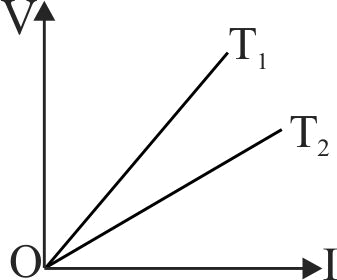357530 An electric toaster has resistance of \(60\,\Omega \) at room temperature \((27^\circ C).\) The toaster is connected to a \(220\,V\) supply. If the current flowing through it reaches to \(2.75\,A,\) the temperature attained by the toaster is around (if \(\alpha = 2 \times {10^{ - 4}}/^\circ C\,)\)
357530 An electric toaster has resistance of \(60\,\Omega \) at room temperature \((27^\circ C).\) The toaster is connected to a \(220\,V\) supply. If the current flowing through it reaches to \(2.75\,A,\) the temperature attained by the toaster is around (if \(\alpha = 2 \times {10^{ - 4}}/^\circ C\,)\)
357530 An electric toaster has resistance of \(60\,\Omega \) at room temperature \((27^\circ C).\) The toaster is connected to a \(220\,V\) supply. If the current flowing through it reaches to \(2.75\,A,\) the temperature attained by the toaster is around (if \(\alpha = 2 \times {10^{ - 4}}/^\circ C\,)\)
357530 An electric toaster has resistance of \(60\,\Omega \) at room temperature \((27^\circ C).\) The toaster is connected to a \(220\,V\) supply. If the current flowing through it reaches to \(2.75\,A,\) the temperature attained by the toaster is around (if \(\alpha = 2 \times {10^{ - 4}}/^\circ C\,)\)
357530 An electric toaster has resistance of \(60\,\Omega \) at room temperature \((27^\circ C).\) The toaster is connected to a \(220\,V\) supply. If the current flowing through it reaches to \(2.75\,A,\) the temperature attained by the toaster is around (if \(\alpha = 2 \times {10^{ - 4}}/^\circ C\,)\)

